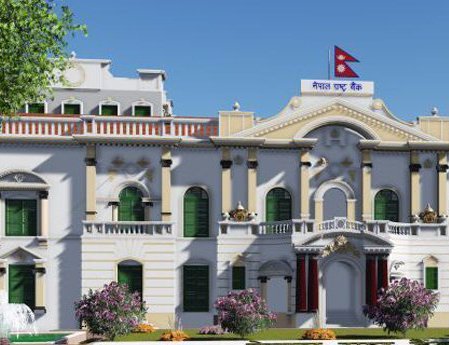
Foreign exchange reserves have increased in the first four months of the current fiscal year 2022/23.
According to the current macroeconomic and financial situation of Nepal published by Nepal Rastra Bank (NRB) on Thursday, the gross foreign exchange reserves increased by 2.5 percent to Rs. 1,246.27 billion in mid-November 2022 from Rs. 1,215.80 billion in mid-July 2022. In US dollar terms, the gross foreign exchange reserves increased by 1 percent to 9.63 billion in mid-November 2022 from 9.54 billion in mid-July 2022.
Foreign currency reserves, which declined sharply, have been on an upward trajectory for the past three months after the restriction imposed on the import of some luxury goods, such as vehicles and high-priced mobile sets and a rise in remittance inflows.
But the government has recently lifted the ban on imports with effect from December 16, 2022.
According to the report, of the total foreign exchange reserves, reserves held by NRB increased by 3.3 per cent to Rs. 1091.22 billion in mid-November 2022 from Rs. 1056.39 billion in mid-July 2022.
Reserves held by banks and financial institutions (except NRB) decreased by 2.7 percent to Rs. 155.05 billion in mid-November 2022 from Rs.159.41 billion in mid-July 2022.
The share of Indian currency in total reserves stood at 23.5 percent in mid-November 2022.
Based on the imports of four months of 2022/23, the foreign exchange reserves of the banking sector are sufficient to cover the prospective merchandise imports of 9.7 months, and merchandise and services imports of 8.4 months.
The ratio of reserves-to-GDP, reserves-to-imports and reserves-to-M2 stood at 25.7 percent, 70.0 percent and 22.4 percent respectively in mid-November 2022. Such ratios were 25.1 percent, 57.8 percent and 22.1 percent respectively in mid-July 2022.
Rs. 378 billion remittances received in four months
In the meantime, the remittance inflows increased by 20.4 percent to Rs. 378.04 billion in the review period against a decline of 7.0 percent in the same period of the previous year.
In the US dollar terms, remittance inflows increased by 10.8 percent to 2.93 billion in the review period against a decrease of 7.3 percent in the same period of the previous year, according to the NRB.
The number of Nepali workers (institutional and individual-new) taking approval for foreign employment increased by 102.5 percent to 195,196 in the review period.
The number of Nepali workers (renew entry) taking approval for foreign employment increased by 46.4 per cent to 87,428 in the review period.
It had increased by 249.1 percent in the same period of the previous year.
Net transfer increased by 20.2 percent to Rs. 417.38 billion in the review period. Such a transfer had decreased by 6.9 percent in the same period of the previous year.
The current account remains in a deficit
Meanwhile, the current account remained at a deficit of Rs. 35.40 billion in the review period compared to a deficit of Rs. 220.91 billion in the same period of the previous year. In the US dollar terms, the current account registered a deficit of 278.0 million in the review period compared to a deficit of 1.86 billion in the same period last year.
In the review period, capital transfer increased by 18.1 percent to Rs. 2.97 billion and net foreign direct investment (FDI) remained Rs. 429.2 million.
In the same period of the previous year, capital transfer and net FDI amounted to Rs. 2.52 billion and Rs. 6.63 billion respectively.
The Balance of Payments (BOP) remained at a surplus of Rs. 20.03 billion in the review period compared to a deficit of Rs. 150.38 billion in the same period of the previous year.
In US dollar terms, the BOP remained at a surplus of 149.6 million in the review period compared to a deficit of 1.27 billion in the same period of the previous year.
Source: The Rising Nepal
- Japan, China Foreign Ministers Meet In Laos
- Jul 27, 2024
- Obamas Back Harris As Democratic Presidential Nominee
- Jul 27, 2024
- Paris Olympic Games Officially Open With Ceremony Along River Seine
- Jul 27, 2024
- Biden And Netanyahu Discuss Gaza Ceasefire
- Jul 26, 2024
- Paris Olympic Will Start On Saturday
- Jul 25, 2024
















